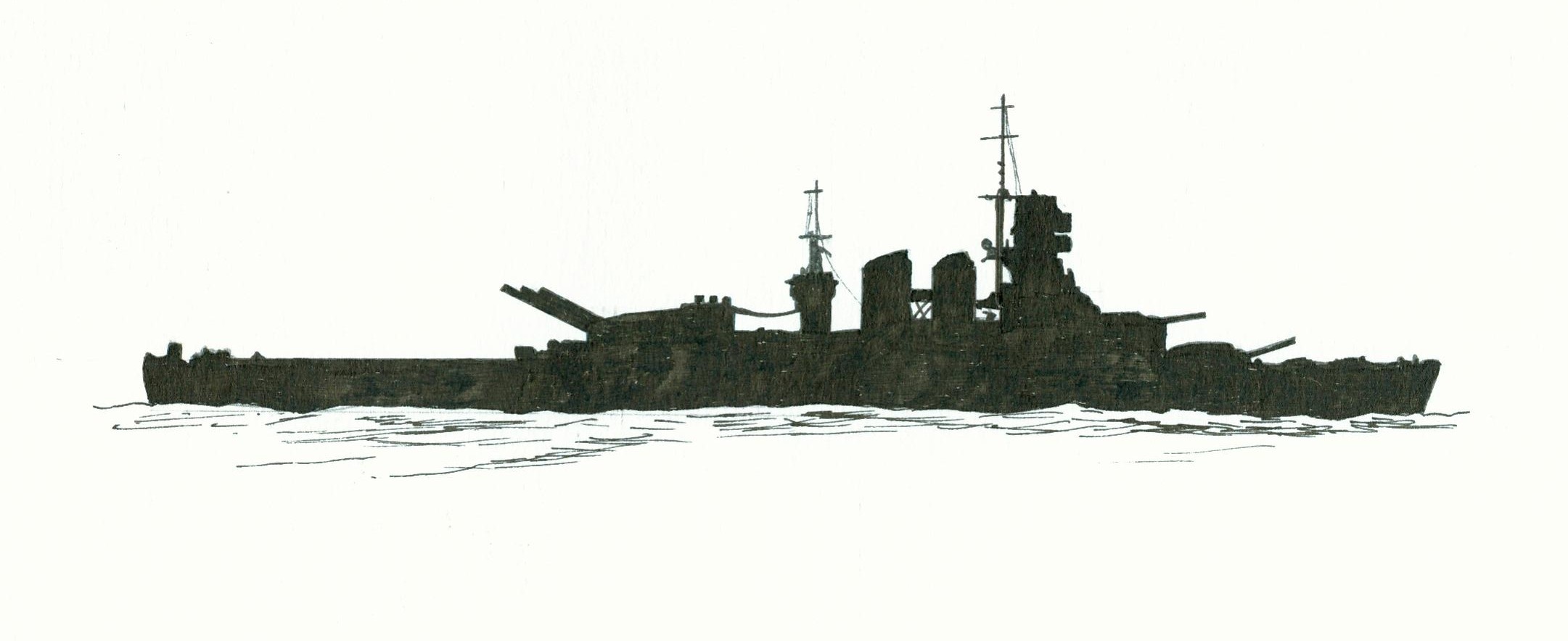Dunkerque
Richelieu-class
Roma of the Italian Vittorio Veneto-class
Laid down in the Caquot or Jean bart dock at Chantiers de Penhoët, Saint-Nazaire, France in December 1936, launched on 6 March 1940, captured by the German forces when they invaded and occupied France in June 1940, escaped while being 75% to Casablanca, French Morocco, sunk while lying there during an allied air attack on 8 November 1942, refloated was on 21 September 1945 suggested to complete her a 40.000 tons aircraft carrier with 40-54 planes, completed as battleship, commissioned in active service on 1 May 1955, reserve since 1 August 1957, never realized plans to convert her into a guided missile battleship in 1957-1958, decommissioned in 1961, Gunnery School Tender at Toulon, France since 1961, stricken in 1968 and broken up at Brégailon, Toulon, France since on 24 June 1970.
General technical specification of the class. Displacement 35.000 (design standard)-48.950 tons and as dimensions 247,85 x 33 x 9,63 metres or 813.2 x 108 x 31.6 feet. Machinery consisted of 4 Parsons geared turbines and 6 Indret Sural fuel oil pressure-fired steam boilers supplying 150.000 hp and driving four 4-bladed screws allowing a speed of 30 knots. Range varied between 2.350-6,950 nautical miles with a speed of respectively 28 and 16 knots. Crew numbered 1.550 planned, actually 750-900 men and during the Suez Canal crisis 1.280 men. Armour consisted of a 33cm/13.0” thick belt, an upper armoured deck of 15cm/5.9” and a lower armoured deck of 4cm/1.6” and with the main gun turrets and conning tower protected by respectively 14cm/5.5-43cm/17” and 26cm/10.2”. The armament consisted of 2x4-38cm/15.0” /45 Modèle 1935 guns in super firing positions and 3x3-15,2cm/6.0” dual purpose Modèle 1936 guns. Between 1952-1953 also were 8-4cm/1.57” anti aircraft guns and 20-2cm anti aircraft guns available. Between 1952-1953 12x2-10cm CAD Model 1945 guns and 14x2-5,7cm ACA Model 1950 guns.
Note
1. Littorio-class or Vittorio Veneto-class consisted of the Littorio, Vittoio Veneto, Roma and Impero.



